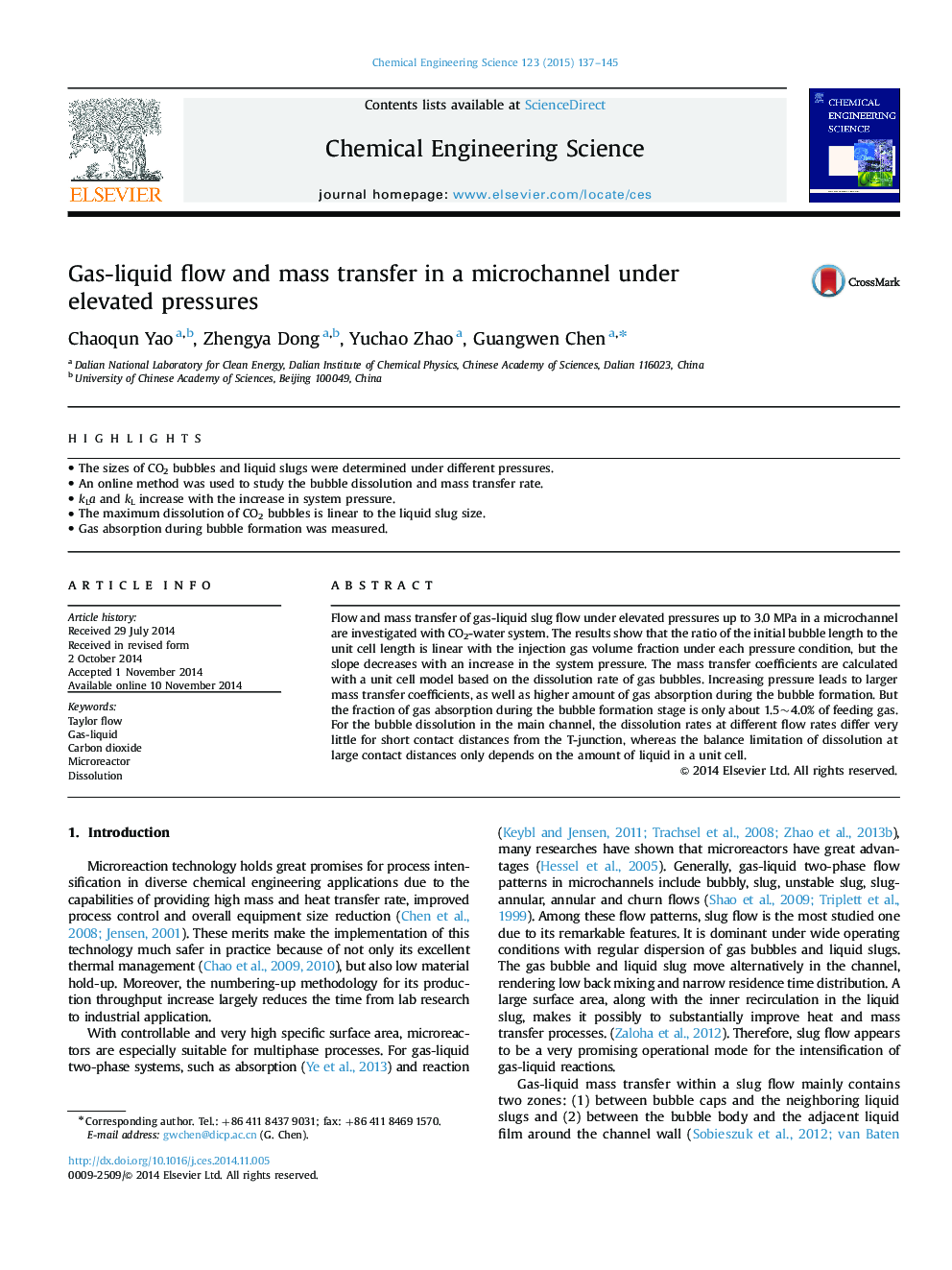| Article ID | Journal | Published Year | Pages | File Type |
|---|---|---|---|---|
| 6590494 | Chemical Engineering Science | 2015 | 9 Pages |
Abstract
Flow and mass transfer of gas-liquid slug flow under elevated pressures up to 3.0Â MPa in a microchannel are investigated with CO2-water system. The results show that the ratio of the initial bubble length to the unit cell length is linear with the injection gas volume fraction under each pressure condition, but the slope decreases with an increase in the system pressure. The mass transfer coefficients are calculated with a unit cell model based on the dissolution rate of gas bubbles. Increasing pressure leads to larger mass transfer coefficients, as well as higher amount of gas absorption during the bubble formation. But the fraction of gas absorption during the bubble formation stage is only about 1.5~4.0% of feeding gas. For the bubble dissolution in the main channel, the dissolution rates at different flow rates differ very little for short contact distances from the T-junction, whereas the balance limitation of dissolution at large contact distances only depends on the amount of liquid in a unit cell.
Related Topics
Physical Sciences and Engineering
Chemical Engineering
Chemical Engineering (General)
Authors
Chaoqun Yao, Zhengya Dong, Yuchao Zhao, Guangwen Chen,
